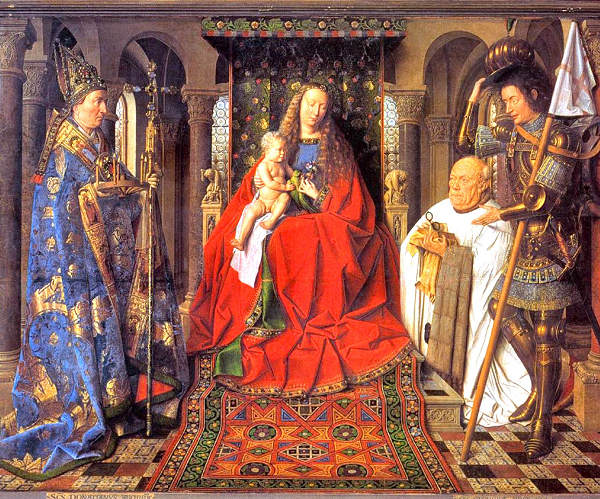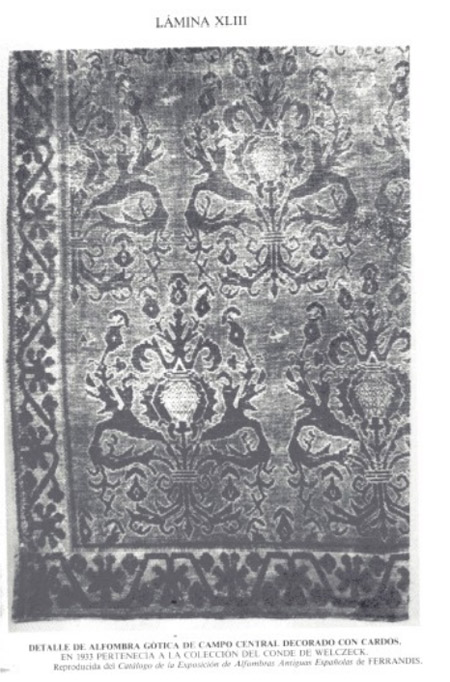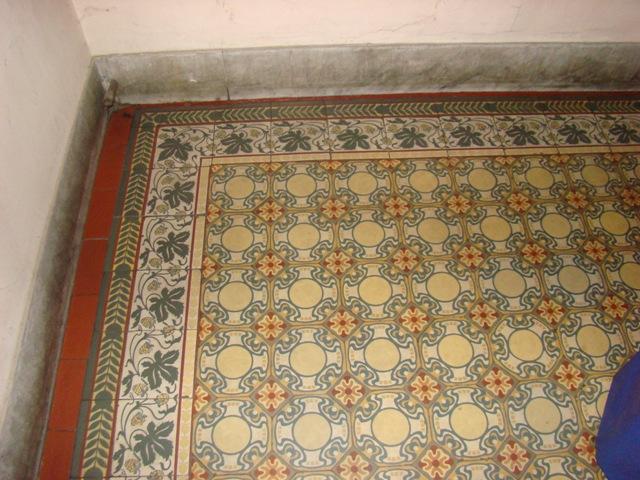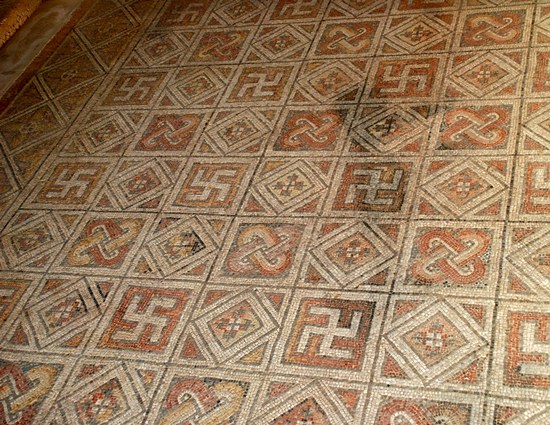|
|
#1 |
|
Members
Join Date: Jul 2008
Location: France
Posts: 10
|
Hello to all,
To illustrate the Onno Ydema thesis (I haven't read it yet) in the sense of a western gothic border ornamentation style (fig 39, 40, 41)    There is an example of a spanish rug (still existing?) with a similar border:  and for the tile joke a typical gothic style pavement from the "biblioteca Antonio Devoto" in Spain:  Best regards, Y 
Last edited by Yohann Gissinger; December 11th, 2011 at 12:04 AM. |
|
|

|
|
|
#2 |
|
Members
Join Date: Oct 2009
Posts: 153
|
Hi Yohann,
The «chain-mail» motif, prominent in the field of this peculiar group of rugs, apparently existed in both European- (Roman & medieval) and Asian / Islamic- traditions. The example below shows this motif in another Roman mosaic (villa La Olmeda, Pedrosa della Vega, Palencia.). In its simplest form, as here, the «chain-mail» seems to have been rarely used as field motif in rugs though.  * Another curiosity of this (carpet-like) Roman mosaic is the use of the swastika symbol, which one might think to be an essentially Indian- and, most generally, East-Asian religious symbol. The swastika is also the unique motif in the strange rug of FIG 65 of main essay ( Osma Master 1450 ).  Surely one should not underestimate the old and continuous contacts between civilizations. Best regards Pierre |
|
|

|
 |
|
|